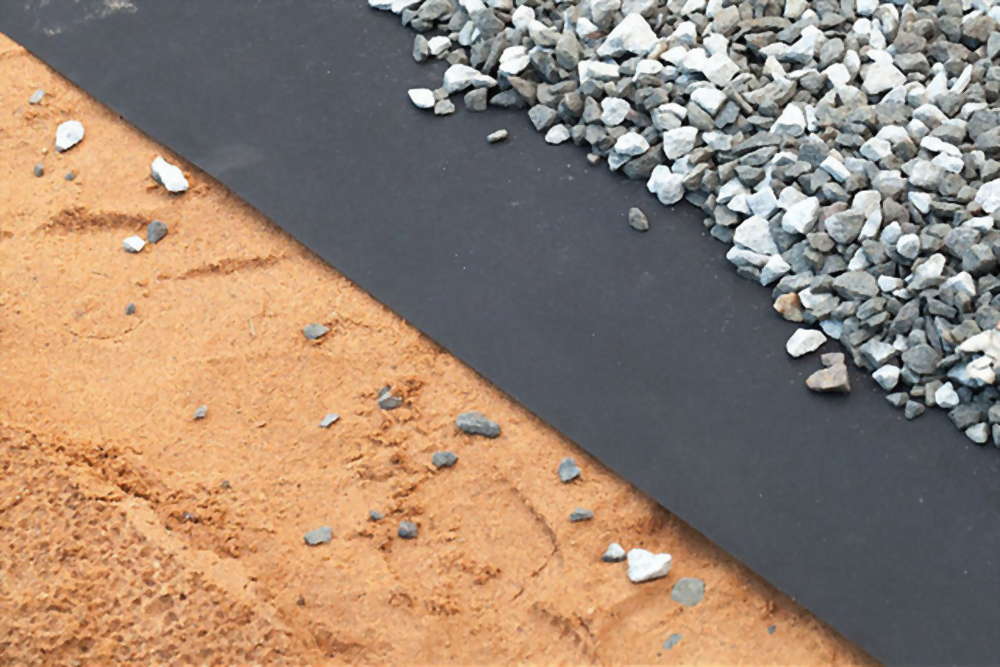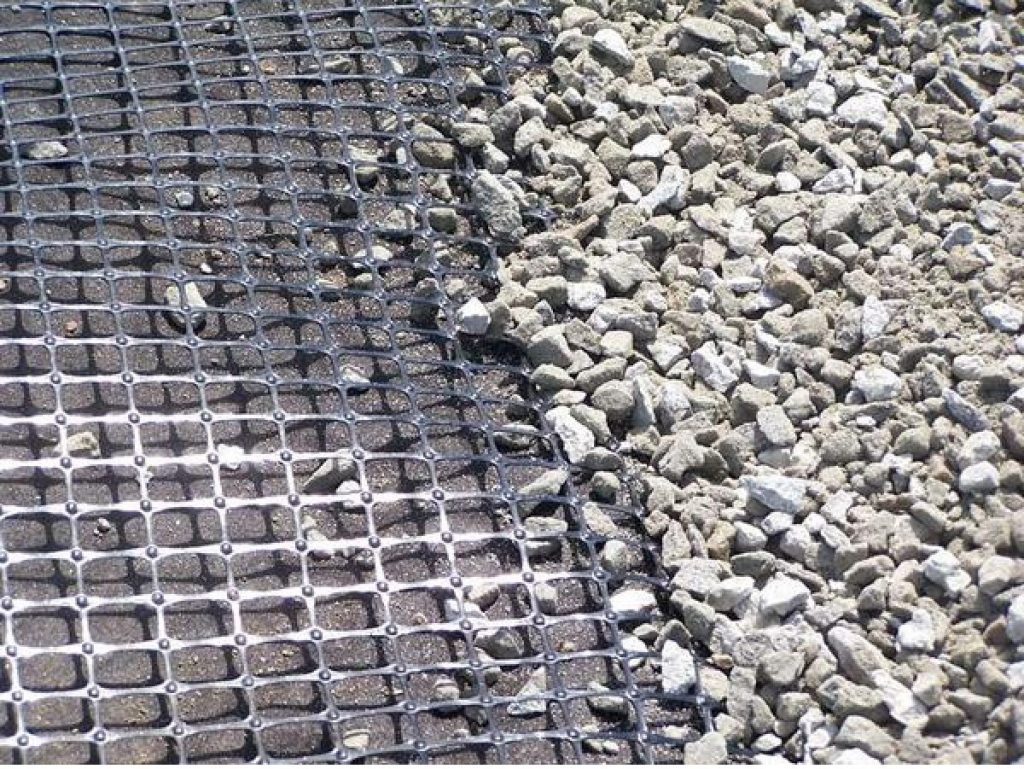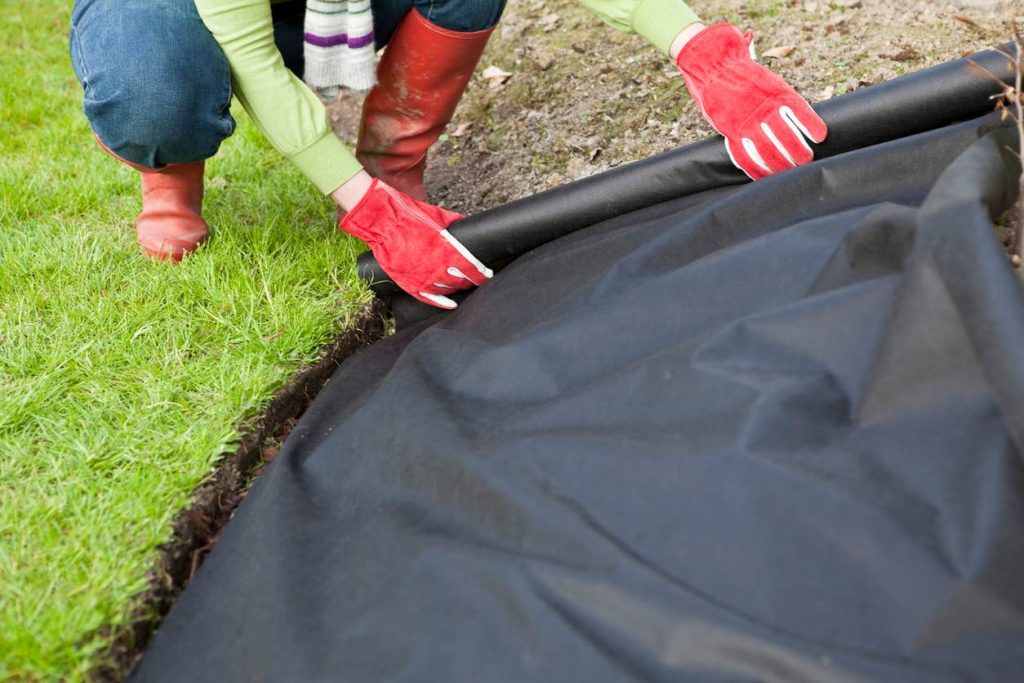Within the landscape profession, there are products that sound and look similar but serve different functions. In this short article, we are going to explore the differences and similarities between permeable and non permeable landscape fabric, and geogrid.

What is Landscaper Fabric?
Also known as filter cloth, filter fabric, they are a synthetic woven material that is laid below the base of your landscape feature. They frequently come in rolls and are black in color. They are relatively cheap and easy to use. In another article we wrote, we talked about the advantages and disadvantages of this material and its proposed utility. They are commonly used under pavers, mulch beds, and garden boxes.
What is geogrid?

Geogrid is a synthetic material that primarily serves to resist tensile forces within an aggregate material. For example, it is used under driveways, in hills, on slopes, to prevent erosion. They come in a grid like pattern, hence the name, and are made of strong polymers. They are found in many landscape specialty stores here in Victoria and are generally not carried by the big box stores. For you average landscape feature, these are unnecessary.
Permeable vs Non Permeable
These are terms that specially pertain to landscape fabric. Permeable means that water can pass through while weeds and roots are resisted. This is important since proper drainage is often key in preventing structural failures.
Non Permeable fabrics are materials that are so closely woven that nothing can get through not even water. A solid plastic sheet for example could be classified as such. This can be done on the very top of a garden bed to prevent airborne seeds and parasite from contaminating the bed.

Similarities
All the above materials are used in various landscape structures and features. Additionally, they are all black plastic sheets that are made of polymers. They are all found in landscape shops and yards and come in rows. They are all relatively inexpensive.
Differences
It is, however, vitally important to note and understand the various differences between the materials. Using the incorrect type of material can cause complete structural failure, deaths of your vegetation, flooding, and other issues.
For example, putting non permeable fabrics behind a retaining wall will severely shorten its lifespan as the water buildup will quickly overwhelm the structural load for which the wall has been designed for.
Putting down geogrid in a garden bed will do nothing to hinder unwanted insects and weeds.
Using landscape fabric to bind together an aggregate will do no such thing, causing the material to erode away quickly.
Using a non permeable fabric in a drought prone climate will cause much vegetation to die, due to the inability of the water to permeate into the soils.
So how can you tell the difference? Besides looking at the label and/or asking a sales rep, you can pour some water on it and see if it soaks through or stays put. (You may need to poke the water puddle a little to overcome surface tension.)
A Final Word
While these products are similar in where they are found, how much they cost, their colors, and their shapes, it is critically important to understand what each material is for and to correctly identify what the material is. The consequences for not doing so can be very severe resulting in tens of thousands of dollars of damage.